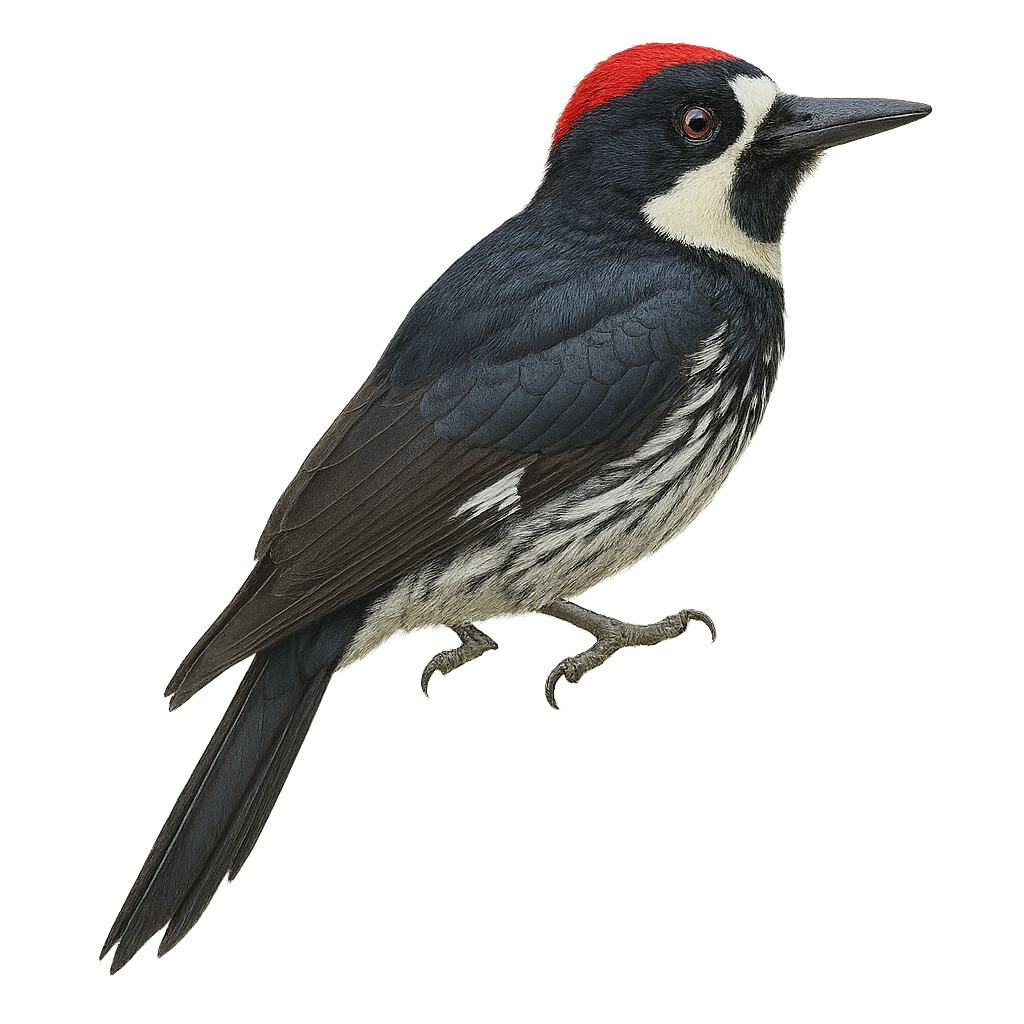Your wildlife photography guide.
Explore the acorn woodpecker in detail, study its behavior, prepare your shots.
Where to observe and photograph the acorn woodpecker in the wild
Learn where and when to spot the acorn woodpecker in the wild, how to identify the species based on distinctive features, and what natural environments it inhabits. The WildlifePhotographer app offers tailored photography tips that reflect the acorn woodpecker’s behavior, helping you capture better wildlife images. Explore the full species profile for key information including description, habitat, active periods, and approach techniques.
Acorn Woodpecker
Scientific name: Melanerpes formicivorus

IUCN Status: Least Concern
Family: PICIDAE
Group: Birds
Sensitivity to human approach: Suspicious
Minimum approach distance: 10 m
Courtship display: April to May
Incubation: 11-14 jours
Hatchings: April to June
Habitat:
oak forests, wooded areas, mixed forests
Activity period :
Primarily active during the day, with peak activity in the morning and late afternoon.
Identification and description:
The Acorn Woodpecker, Melanerpes formicivorus, is a fascinating bird from the Picidae family, easily recognizable by its distinctive black and white plumage and bright red cap. It is primarily found in oak forests of North and Central America, where it plays a crucial role in the ecosystem by dispersing oak seeds. This woodpecker is famous for its unique behavior of storing acorns, which it inserts into holes drilled in tree trunks, forming collective "granaries." Sociable, it often lives in family groups and communicates through a variety of calls. Although primarily insectivorous, it also feeds on fruits and nuts.
Recommended lens:
400 mm – adjust based on distance, desired framing (portrait or habitat), and approach conditions.
Photography tips:
To photograph the Acorn Woodpecker, focus on oak forests where it is most active. Use a 400mm or longer telephoto lens to capture detailed images without disturbing the bird. Be patient and discreet, as it remains suspicious despite its sociable nature. Observe its acorn-storing habits to anticipate its movements. The best lighting is found early in the morning or late in the afternoon. A tripod can be helpful to stabilize your camera during prolonged shooting.
The WildlifePhotographer App is coming soon!
Be the first to explore the best nature spots, track rutting seasons, log your observations, and observe more wildlife.
Already 1 431 wildlife lovers subscribed worldwide

